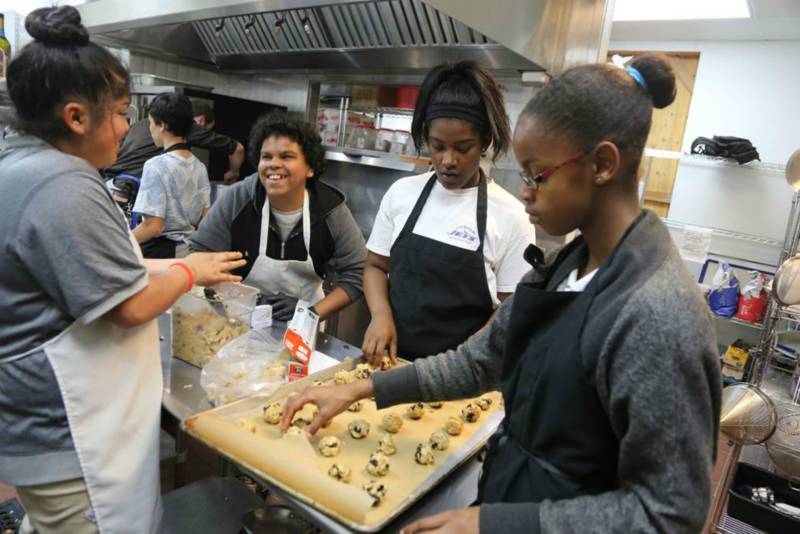It all started with a simple request. In 2006, Cathryn Couch was working as a chef, making home-delivery meals for clients. One day, a friend called and asked: did Couch have any cooking jobs for her teenage daughter? She didn’t, but the friend persisted. Couch eventually came up with a project for her and the daughter: making meals and delivering them to a local homeless center.
After seeing how excited and proud the daughter was after making the meals, Couch decided to replicate their lesson on a grander scale, and in 2007, the Ceres Community Project was born. Named for the Roman goddess of agriculture and nurturing, the Sonoma County-based program recruited teen volunteers to cook healthy, all-organic meals and deliver them to local patients with cancer and other debilitating conditions.
The program took off. That first year, 21 volunteers made 4,500 meals. In 2015, they had over 400 volunteers who prepared over 90,000 meals. They came out with a cookbook. They expanded the program, to Marin and Sonoma Valley, and helped launch similar programs in cities like Eugene, Oregon and Madison, Wisconsin. They partnered with Whole Foods: all the Whole Foods stores in Sonoma and Marin counties sell salads made by Ceres, with a dollar from each pint of salad going back to the organization.
And now, the group has expanded into the East Bay. In February, the Ceres Project opened up in Alameda, in conjunction with the Alameda Point Collaborative. (Much of the funding came from a $100,000 bequest earmarked for an East Bay site left by a Walnut Creek woman who passed away from breast cancer. Generally, their funding comes from a mix of individual, foundation and in-kind donations.) Teens from the Collaborative--a supportive housing community that offers housing and job training to formerly homeless families that have at least one adult with a permanent disability--cook healthy meals (chickpea pumpkin burgers with date chutney, baked salmon with wild rice) with produce from the one-site garden in an after-school program. Adult volunteers then deliver the meals to the Charlotte Maxwell Clinic in Oakland, a nonprofit serving women with cancer and their families whose incomes are at or below 200% of the federal poverty level.

The Alameda program has already been a success, said Aileen Suzara, the location’s Program Coordinator and Chef. “A lot of the kids, I’m seeing their natural leadership come out in the kitchen. I see a spark from some of the kids,” Suzara said. “They have a sense of how this is really touching someone’s life. The kids are resonating especially with the part of connecting to someone--even if they haven’t met yet--through food.”

